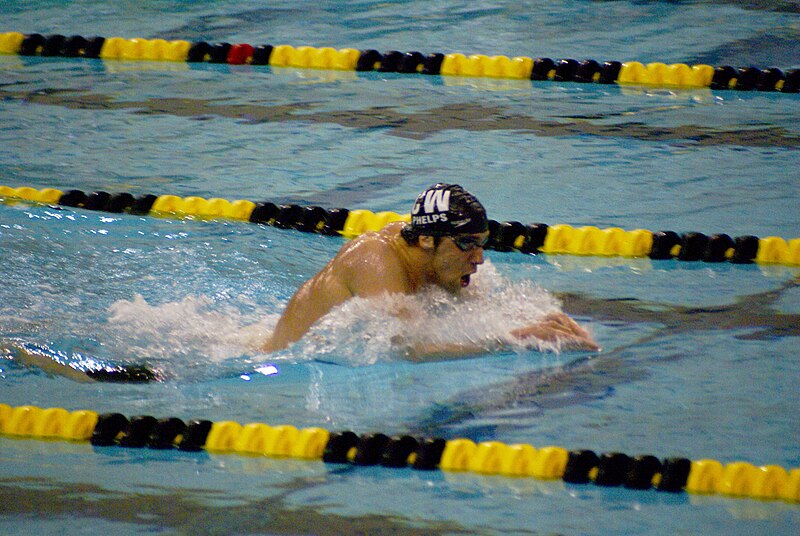The
breaststroke is a
swimming style in which the swimmer is on their chest and the torso does not rotate. It is the most popular recreational style due to its stability and the ability to keep the head out of the water a large portion of the time. In most swimming classes, beginners learn either the breaststroke or the
front crawl first. But in competitive swimming, the breaststroke is regarded as one of the most difficult strokes, requiring comparable endurance and leg strength to other strokes.
Breaststroke is the slowest of the four official styles in competitive swimming. The fastest breaststroke swimmers can swim about 1.57 meters per second. Although it is the slowest of the four competitive strokes, it is commonly agreed that it is the one of the most difficult when done correctly. It is also often the hardest to teach to rising swimmers due to the importance of timing and the coordination required to move the legs properly.
Breaststroke is swum while leaning on the chest, with the arms only breaking the surface of the water slightly and legs always underwater, while the head is underwater for the second half of the stroke. The kick is sometimes referred to as a "frog kick" because of the resemblance to a frog's kick, but when done correctly it is more of a "whip kick" due to the whip-like motion that moves starting at the core down through the legs.
The body is often at a steep angle to the forward movement. This slows down the swimmer more than any other style. Professional breaststrokers use abdominal muscles and hips to add extra power to the kick, although most do not perfect this technique until the collegiate level. This much faster form of breaststroke is referred to as "wave-action" breaststroke and fully incorporates the whip-kick.
A special feature of competitive breaststroke is the underwater pullout. From the streamline position, one uses the arms to pull all the way down past the hips. As the arms are pulling down, one downward dolphin kick is allowed (as of the 2005 season), though still optional (However, any upward motion with the dolphin kick is strictly forbidden, and will result in a disqualification). This is followed by the recovery of the arms to the streamline position once more, and then a kick. The pullout at the start and after the turns contributes significantly to the swimming times. Therefore one way to improve the swimming times is to focus on the start and the turns.
Of the four competitive strokes of swimming, breaststroke is the most efficient in terms of energy consumption over a specified distance, though it is the slowest.
Information from wikipedia













